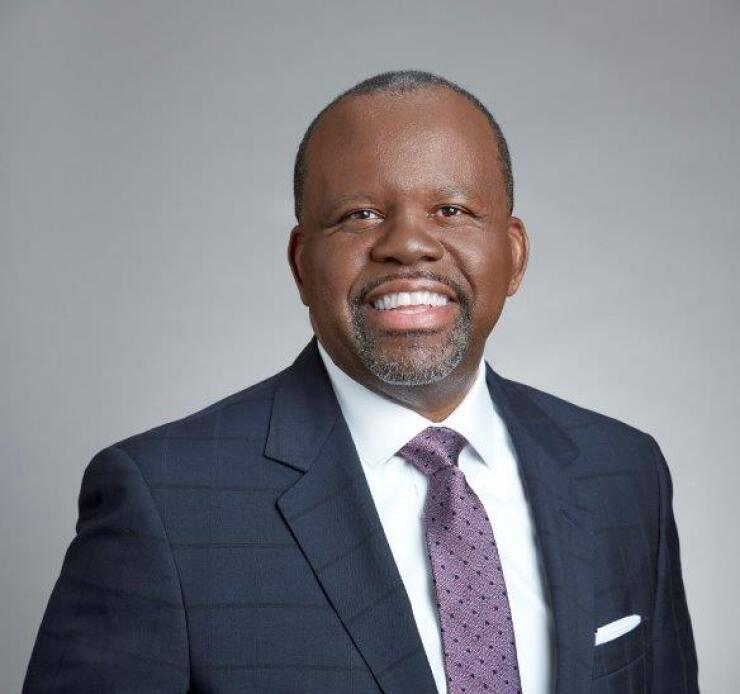
After a huge infusion of capital from the Treasury Department, community development financial and minority depository institutions needed deposits. A lot of deposits. So, they banded together to create a program for socially minded investors seeking to make an impact while ensuring their funds are safe.
"This is a new-money program," said Brian Argrett, CEO of the Washington, D.C.-based City First Bank. "It opens the window to start a deposit relationship and then to be able to figure out, in collaboration with that depositor, how else we can satisfy our mutual goals, particularly within the local market, low-and-moderate-income communities and communities of color."

Two trade associations representing CDFIs and MDIs, the Community Development Bankers Association and the National Bankers Association, launched the Advancing Communities Together deposit program this month with $35 million in seed-money deposits from four financial firms.
Attracting deposits is tough industrywide, but it's proved especially challenging for some CDFIs and MDIs. "The deposit base in many of the underserved and rural communities CDFIs and MDIs serve just don't have the size of deposits" necessary to support a conventional bank, Southern Bancorp CEO Darrin Williams said in an interview.
"We've got 53 branches in Arkansas and Mississippi, but branch locations for a bank like Southern — don't think of a branch in downtown New York," said Williams, who also chairs the Community Development Bankers Association. "I've got branches in towns of less than 4,000 people."

Unveiled June 4, ACT is intended to match institutional players willing to deposit a minimum $5 million with participating MDI and CDFI institutions. ACT's network of mission-oriented banks currently numbers 75, including the $2.6 billion-asset Southern in Arkadelphia, Arkansas. It hopes to recruit more and, just as importantly, widen the scope of depositors beyond the heavy hitters typically active in the space.
"We've been reaching out to depositors that we know, but now that the program has officially launched, we're broadening the net, reaching out to different types of depositors — corporations, foundations, universities and the like," said Diane Ellis, a senior managing director at IntraFi, the reciprocal deposit network which created a subnetwork exclusively for CDFIs and MDIs participating in ACT. "We're getting a really good reception."
For City First and other mission-oriented banks that can't fully fund themselves with customer deposits, relationships with institutional depositors "are as valuable as the deposits themselves," Argrett said. In that respect, ACT "is really an expansion of the funding pool and of the relationships that drive success at MDIs and CDFIs. It's a long-term play, not a short-term gap-filler," Argrett said.
A perennial challenge for mission-oriented banks, funding took on added urgency in March 2021, when the Department of the Treasury unveiled the Emergency Capital Investment Program, with a pledge to invest $9 billion in CDFI and MDI institutions. Since few, if any, mission-oriented banks had received capital infusions on that scale (Southern received $250 million, City First $150 million), they were left scrambling to gather enough deposits to take advantage of the ECIP capital. They'll need to raise as much as $30 billion, according to some estimates.
"Now we've got the capital, that's great, but you've also got to be able to have dollars to lend," Williams said. "You can't lend equity. You've got to lend deposits."
The $1.4 billion-asset City First has grown its loan portfolio 44% since receiving ECIP cash in June 2022. Though funding that level of growth has been a challenge. "The underlying communities, individuals and institutions that we are lending to don't necessarily have a tremendous amount of liquidity," Argrett said. "That's true for all CDFIs and MDIs to a degree."
Under the program, institutional depositors identify a CDFI or MDI as their relationship bank, which takes as much of the deposit as it can handle. IntraFi then distributes the balance to other CDFIs and MDIs in the program, ensuring depositors' funds get FDIC insurance and providing benefits far beyond the relationship bank. The depositor gets one statement from its relationship bank as well as reports explaining how the money was used.
In addition to IntraFi, the program's inaugural depositors were Blackstone, BNY Mellon and Warburg Pincus. ACT's initial interest rate was set at 4%.
ACT has a leg up in that it seeks bank deposits, rather than contributions or even investments. "We're not asking people to give away money or even [risk] it, just accept" an interest rate a little below the market rate, said Ellis, who spent 34 years at the FDIC before joining IntraFi.
That said, Ellis expects it to take some time for the program to get up and running fully. "It's going to take some time to ramp up ... particularly as we reach out to this new set of depositors that may be less familiar with MDIs and CDFIs," Ellis said. "It's not like you'll talk to someone and get a decision right away."
ACT's rollout adds to a recent uptick in the level of institutional deposits flowing to mission-oriented banks. Earlier this week, Boston-based custody giant State Street named three MDIs to the list of minority deposit institutions it's supporting with $100 million of deposits it expects to place this year. Citigroup and Bank of America have also announced plans to place substantial deposits in mission-oriented banks. Both of those banks are part of a separate effort, the Economic Opportunity Coalition, a group of banks, corporations and foundations seeking to secure $3 billion of deposits for MDIs and CDFIs.
"They've got to put it in some bank anyway," Williams said of institutional depositors. "Why not put it in a mission-focused bank. … We take those deposits and lend in communities that are often denied access to capital and otherwise don't have the ability to grow."